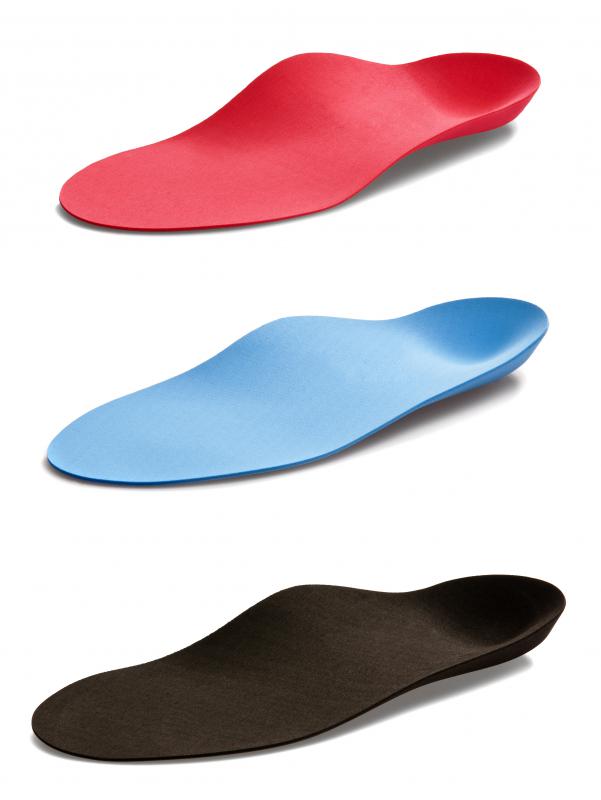At WiseGEEK, we're committed to delivering accurate, trustworthy information. Our expert-authored content is rigorously fact-checked and sourced from credible authorities. Discover how we uphold the highest standards in providing you with reliable knowledge.
What Are Overpronation Insoles?
Overpronation insoles are designed to prevent the foot and ankle from turning inward while walking or running. The foot naturally turns inward a small amount, but problems can arise if this becomes excessive. Generic overpronation insoles, which are designed for people with mild to moderate problems, can be found in many retail stores. Custom insoles, which are thought to be more effective, usually need to be created by a podiatrist.
Excessive pronation, otherwise known as overpronation, is a condition in which the foot turns inward more than it should when walking or running. If a person’s heels appear to lean to the inside, or if the knees turn inward, then he or she is likely to suffer from overpronation. Some people who have excessive pronation issues suffer from joint pain, especially in the knees. This is because the excess rotation places extra stress on the knee joint, resulting in microtrauma and pain.

To prevent excessive inward rotation of the ankle, overpronation insoles are often used. These are like regular shoe insoles, except they are designed to lift the foot arch and prevent overpronation. The height of the insole arch varies depending on how much support the person needs and which shoes he or she wears. Unlike normal insoles, overpronation insoles need to be made from a durable material that is strong enough to affect the body’s biomechanics.

The most basic overpronation insoles can be bought in many running stores. These are often generic insoles, however, and it can be difficult to find a good fit. Generic insoles are usually only recommended for people with mild overpronation problems, because they aren’t designed to cope with excessive overpronation.
Custom insoles are usually recommended for people with serious overpronation problems and those who are suffering joint pain because of it. To create custom insoles, a podiatrist assesses the person’s foot movement while walking, often with the help of recording equipment. A mold of the person’s foot is then created so the overpronation insoles can be designed specifically for his or her feet.

There are various types of overpronation insoles. Rigid orthotics, which are designed for people with severe overpronation problems, are made to have very little flexibility. Heat-moldable orthotics, on the other hand, are made for people with less of a problem and can flex a small amount. Prefabricated orthotics are the most flexible and are only suitable for people with minor overpronation problems.
AS FEATURED ON:
AS FEATURED ON:















Discuss this Article
Post your comments